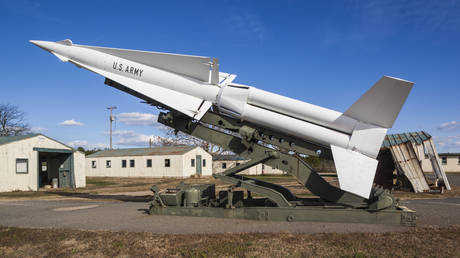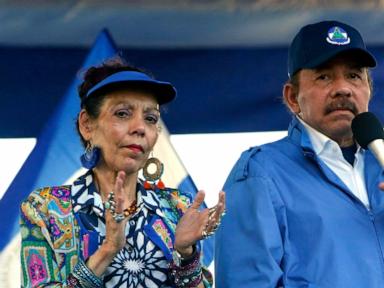ARTICLE AD BOX
THE successor to the Pope will be selected by a Conclave in an ancient and secret process that has been unchanged for hundreds of years.
It comes after the death of Pope Francis, 88, who recently told aides he was ‘preparing’ for the end after being diagnosed with pneumonia in both lungs.
 AFP - Getty
AFP - Getty Reuters
Reuters Getty
Getty
The role of being head of the Catholic Church is one that is taken on by an elected senior cardinal usually until their death which is announced via ancient smoke signals.
Pope Francis was anointed in 2013 when he took over from Pope Benedict XVI who stepped back from the role due to ill health in an incredibly rare move.
It was then that a few tweaks were made to the succession process but in general, the Papal Conclave system has been unchanged for 1,000 years and will be used again to choose Francis’ successor.
The death of the Pope has to be confirmed by a medic, their passing is only made official by the camerlengo, the Pope’s Chief of Staff.
They call out the Pope’s birth name three times and usually taps the Pontiff’s head with a silver hammer.
If these calls and actions go unanswered, the death is declared and senior church officials, notably the Cardinal Vicar of the Diocese of Rome, are informed.
The public will hear of the Pontiff’s death by seeing black smoke known as fumata nera emerge from a chimney in the Sistine Chapel.
The Pope’s ring, the Ring of the Fisherman, is also burned after being removed and crushed by the camerlengo who will have also locked the pontiff’s apartment, desk, and cut off his telephone wires.
The decision of the sacred Conclave will later be revealed through the smoke of the chimney.
But first, there is then a period of mourning during which the Papal Vacancy is announced by the Vatican known as the Sede Vacante or “the seat is vacant”.
The mourning period usually lasts for nine days and the funeral of the Pope is typically held between the fourth and sixth day where he is traditionally buried at St Peter’s Basilica.
The Conclave and oath to secrecy
Then begins the ritual of electing a new pope which is a process shrouded in secrecy.
The democratic process sees multiple rounds of voting by Cardinals under the age of 80 who make up the Conclave.
This continues until a clear successor is chosen by consensus.
All Cardinals across the world are called to Rome for the Conclave, with 138 out of the current 252 being eligible to vote with the Financial Times calling it “the world’s most powerful electorate.”
Since 1492, the Papal Conclave has taken place in the Sistine Chapel where they were traditionally locked-in until a decision was made.
Now, it takes place in the Domus Sanctae Marthae adjacent to St Peter’s Basilica but all votes are still cast inside the Sistine Chapel.
All cardinals are taken inside to swear an oath of secrecy where they are isolated from the outside world and the building is swept for listening devices to protect the sanctity of the ancient process.
 Getty
Getty Getty
Getty AFP
AFPAny outside communication or leaks would result in excommunication from the church.
The locked-in tradition which gives the Conclave its name which in Latin means “with key” dates back to 1268.
The process is so strict that until 2005 the cardinals were forced to sleep in hard beds in makeshift cells with chamber pots for toilets.
Pope John Paul II improved matters by building the Domus Sanctae Marthae, the five-story 130-room guest house.
For a Pope to be elected they must get two-thirds of the vote, and each cardinal’s vote has equal value.
Candidates to be Pontiffs are officially only required to be Catholic and male but for centuries, they have only ever been chosen once reaching the rank of Cardinal.
No age limit is in place with Francis taking on the role at 76 and his predecessor Benedict was 78.
Candidates are not allowed to openly campaign for the role though the BBC reports that it is “still a highly political process”.
While the cardinals are said to be “guided by the Holy Spirit,” the Conclave is also impacted by factions and groupings that strengthen candidates’ positions, according to the BBC.
Voting and smoke signals
When the Conclave begins, the merits of each candidate are secretly discussed and voting begins where each cardinal will write the name of their choice on a piece of paper in disguised handwriting.
This is folded in half and placed in an urn at the altar one by one where they are mixed, opened and counted by three cardinals who are selected an random to be Scrutineers.
The third scrutineer sews up the counted votes which are then burned.
This voting process continues until a clear decision is made with Cardinals in the past being allowed just one meal a day in a bid to speed up the process if it went on for more than three days.
After another five days of no decision, the Cardinals were given just bread and water.
A relatively new rule states that after 12 days of voting, a candidate can win with a 50 per cent plus one vote majority.

Ballots are held twice in the morning and twice in the afternoon and they are all burned in the stove at the Sistine Chapel with black smoke emerging to show that a decision has not yet been made.
This smoke is now made with the help of chemicals after some confusion was seen in previous years where it took time to turn black.
The signal that a new Pope has been elected is when white smoke or fumata bianca emerges from the chimney of the Sistine Chapel along with the ringing of bell.
It is not clear when this ritual began but it has been consistently used to declare a new pope since at least 1878.
Pope is declared
The elected Pontiff is then asked by the Cardinal Dean if they accept the position and they then state the name that they will take upon becoming the Pope.
This is usually inspired by a saint or previous pope that they wish to honour.
The new Pontiff then enters the Room of Tears inside the Sistine Chapel where they are said to be so overwhelmed with emotion they cry – hence the name.
They then dress and prepare to greet the world on the balcony on St Peter’s Basilica overlooking 100,000 people on St. Peter’s Square.
Robes of multiple sizes are prepared in advance by papal tailors Gammarelli.
The three sets of vestments in sizes small, medium, and large include a white cassock, a white silk sash, a white zucchetto (skullcap), red leather shoes and a red velvet mozzetta or capelet with ermine trim.
The Pope will dress alone, wearing a gold-corded pectoral cross and a red embroidered stole before emerging onto the balcony.
The Cardinal Dean first appears to declare “Habeumus Papum” saying: “I announce with great joy, we have a new Pope.”
The new Pope then emerges onto the balcony to give their first blessing known as the Urbi et Orbi “To the City and the World”.
 The newly elected Pope will appear on the central balcony of St Peter’s Basilica to give his first blessingGetty Images - Getty
The newly elected Pope will appear on the central balcony of St Peter’s Basilica to give his first blessingGetty Images - Getty Getty Images - Getty
Getty Images - Getty.png)
 2 hours ago
1
2 hours ago
1








 English (US)
English (US)